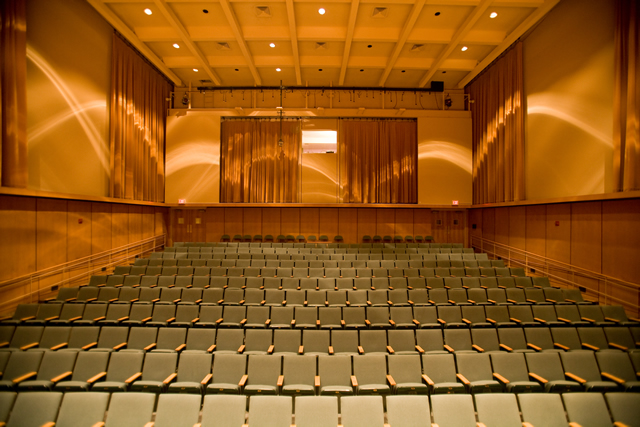
Music ETDs
Publication Date
9-29-1969
Abstract
The Problem
It was the purpose of this study to investigate classroom procedures and practices in the utilization of televised music instruction at the fifth grade level as presented by KNME-TV, Channel 5 and the Albuquerque Public Schools, Albuquerque, New Mexico.
The primary goals or the investigation were to research the existing status of the televised music program and its utilization within the classroom and to examine significant relationships among the phenomena. The investigation sought to cover five primary areas of inquiry:
1. The extent of use of the televised music classes.
2. How the teleclasses are being utilized.
3. How inservice education resources, classroom music materials, equipment and music teaching practices are being utilized.
4. Procedures and practices in utilization considered to be most effective by teachers.
5. The structure of the music program in classrooms not utilizing instructional television.
Method of study
The survey method was used to research the problem and the questionnaire was the principal data-collecting device. Two hundred thirty-three classroom teachers at the fifth grade level in 78 elementary schools in Albuquerque were surveyed. Responses were anonymous. One hundred seventy-seven questionnaires were returned. A trial survey was conducted in April, 1969. The main survey was conducted in May, 1969. Data was processed by electronic computer at the University of New Mexico Research and Testing Center. The statistical analysis of data consisted of:
1. Frequency tabulation on all variables.
2. Correlation between each variable with all other variables.
3. Cross-tabulation involving non-continuous variables.
Summary of the Findings
The statistical analysis yielded the following results which the investigator considers worthy of special note:
1. From the 177 questionnaires returned, 160 respondents indicated that they viewed either "regularly or “occasionally.” Twelve indicated they "never" viewed. Five did not respond.
2. The viewing of the teleclass was considered "most effective" by 71 respondents. Forty-two indicated a "moderately effective" response, 7 a "least effective" response, and 57 left the item blank.
3. Teachers who view regularly do not necessarily follow-up regularly. (Out of 177 respondents, 144 indicated they view "regularly." Forty-five indicated they followed-up "regularly.”)
4. The statistics revealed the following correlations which can be considered significant at the .05 level of confidence with a coefficient of .195 or above:
a. Teacher participation during viewing and student participation during viewing, (r= .217).*
b. Teacher participation during viewing and follow-up activities applying ideas given by the teleclass or the Television Study Guide for Utilization, (r= .489).
c. Follow-up applying ideas given by the teleclass or the Television Study Guide for Utilization and the use of music in the teaching of other subjects, (r= .322).
d. Teacher participation during viewing and the teaching of self-designed music lessons, (r=.948).
e. Viewing of the teleclass and the use of rhythm instruments, (r= .355); and phonograph, recordings, (r= .604).
5. There was no significant correlation at the .05 level between a personal preference for teaching a music program without the aid of televised instruction and the teaching of a self-designed music program, (r= .061). Teachers who do not view do not necessarily employ a self-designed music program in its place.
*“r” refers to correlation coefficient.
6. The television teacher's visit to the classroom was considered to be "helpful" by 97 of the 177 who responded. (Four indicated a “not helpful" response, 9 were "undecided," 58 indicated the television teacher had not yet been to the class and 9 left the item blank.)
7. Frequency totals indicated that inservice courses in utilization of televised music instruction designed with "released time” for teachers would be "highly desirable."
8. Frequency tabulation indicated that utilization of the teleclasses consists primarily of using the Silver Burdett recordings and students’ books on a weekly basis. Little music activity occurs on a daily basis. The Television Study Guide for Utilization is not highly utilized by teachers, even on teleclass days. Music instruments, when available, are not highly utilized.
9. In the area of “Classroom Music Teaching Practices," the highest "most important "rating was given to the emphasis upon "awareness of correct rhythm and pitch” under the area of Singing.
10. The greatest number of blanks (no response) occurred in the areas of "Effectiveness Ratings" and "Classroom Music Teaching Practices."
Conclusions
This study was unique in that it was a pioneer research project in the application of a statistical analysis of the many factors involved in classroom utilization of televised music instruction. The bulk of previous research in the field has been conducted in the areas of production and presentation of televised instruction rather than in its use. Here-to-fore, statistical analysis had not been applied to the specific area of utilization of televised music instruction. The findings are significant to the future of innovative teaching in music and to the effective utilization of the medium of television in music education.
Degree Name
Music
Level of Degree
Masters
Department Name
Department of Music
First Committee Member (Chair)
Jack Ramsey Stephenson
Second Committee Member
John Montayne Batcheller
Third Committee Member
Edward Wayne Bundy
Language
English
Document Type
Thesis
Recommended Citation
McVicker, Kathleen. "Utilization of Televised Music Instruction at the Fifth Grade Level in Albuquerque, New Mexico." (1969). https://digitalrepository.unm.edu/mus_etds/55
